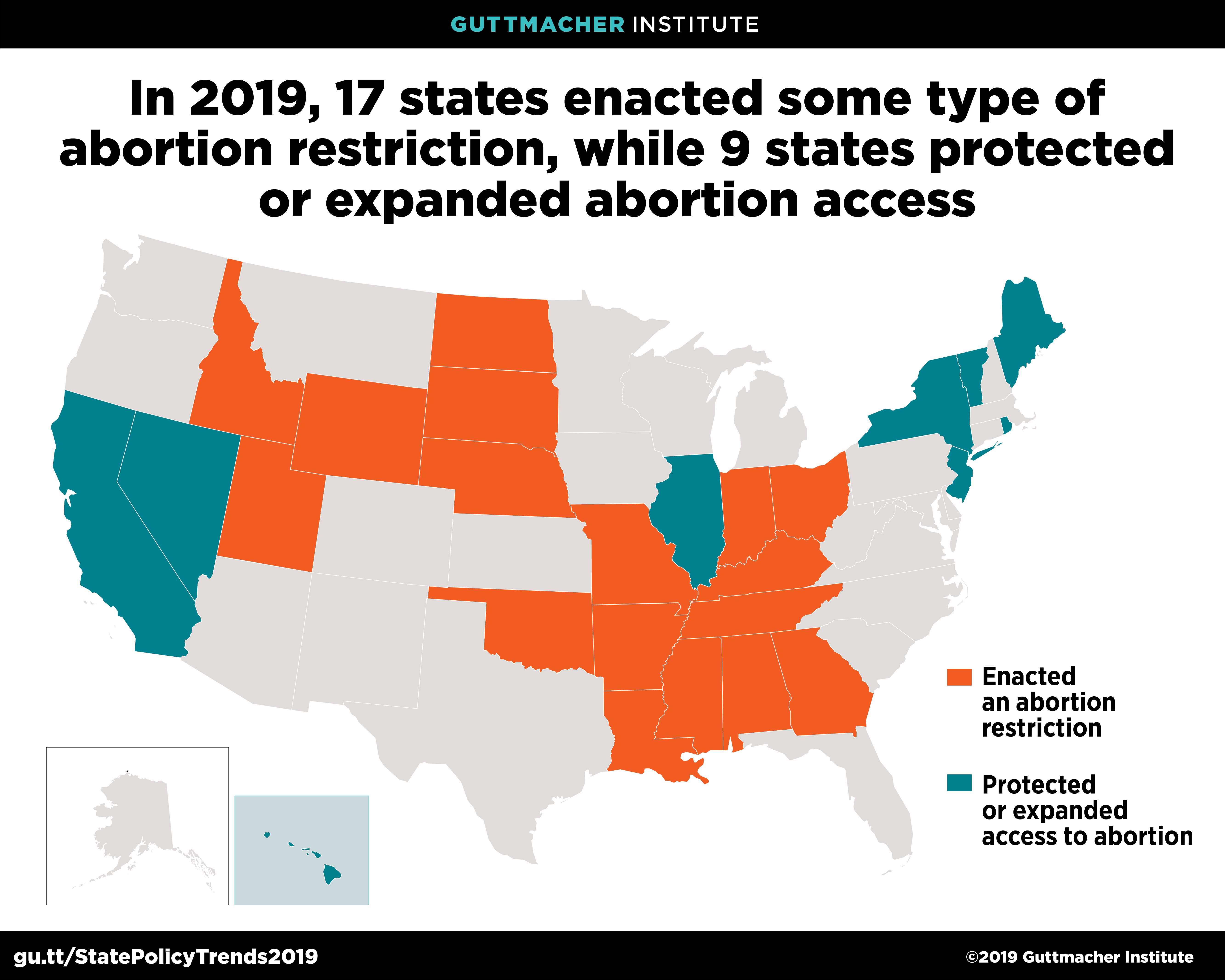by Craig Klugman, Ph.D. and Keisha Ray, Ph.D.
The end of the year usually brings a media blitz of top ten lists for the year that is ending. Thus, it seems appropriate for a list of the top ten (actually eleven) bioethics stories of 2019. This is not a scientific list, it is simply for entertainment and is constructed based solely on the opinion of the blog editors at bioethics.net. However, this is not a hierarchical list, but merely the order in which we thought of the topic. Some of these topics focus on public health and social justice, areas that are not traditionally part of bioethics, but should be.
- Artificial intelligence. This year, one could hardly scan a news page without seeing some reference to artificial intelligence, especially in regards to medicine. With the development of algorithms that are supposed to improve accuracy and streamline medical practice from diagnosis, to prescribing, to predicting patient outcomes, media outlets suggest that we may all receive medical care through artificial intelligence rather than traditional health care providers. In the world of bioethics, this has caused much concern over safety, efficacy, and professionalism. The ethical challenges are so noteworthy that the Hastings Center has begun a project to examine the potential issues.
- Health care organizations selling patient private health information to big data companies. In order to create self-learning machine algorithms, the computers require vast amounts of data. This year, we learned about several arrangements where large hospital systems have been selling patient data to tech companies. Thus, information patients shared with their physicians with an expectation of confidentiality, are being sent to companies who claim they do not owe confidentiality to patients and also do not fall under HIPAA. There is no informed consent from patients and not even notification of what their information is being used for. There are also no regulations or guidelines for such transfers or use of such information.
- Abortion. Although a perennial topic, this year saw the passing of multiple laws intended to curtail access to abortion, with some making their way to U.S. Supreme Court review. Most recently, the Court decided not to hear a challenge to a Kentucky law that requires ultrasounds, a verbal description of the findings, and playing audio of blood flow in the embryo/fetus before an abortion can be performed. Seventeen states enacted more restrictive laws this year but nine states expanded abortion access. Six states now require doctors to tell patients that a medicated abortion can be reversed, something that is not only untrue but is dangerous to the mother’s life.

- The Opioid crisis. As a result of a concerted marketing effort and burying information, Purdue Pharmaceuticals declared bankruptcy this year as it was faced with lawsuits related to deaths by people addicted to opioids (a danger the company allegedly was aware of). The company and its owners are alleged to have marketed the drugs as safe and non-addictive when they had evidence to the contrary. Approximately, 48,000 people die each year due to opioid overdoses, a number so high that it is a major cause of decrease American life expectancy. At the heart of this appears to be a scheme to make a lot of money by manufacturers, their owners, and doctors. The epidemic is most acute in areas with high poverty.
- Humanitarian crisis at the southern U.S. border. Following a Trump administration edict that separates families and imprisons children in concentration camps, nearly 70,000 minors are now being held by the U.S. These children are living in conditions where they lack adult contact, blankets, decent food, medical care, and schooling is illegal following earlier court rulings. But the detention and separation continue.
- Bias in medicine continues to be a recurring problem in the delivery of medical care. This year we learned that artificial intelligence is bigoted because it carries the biases of the information uploaded into it, and also because it can easily develop biases of its own. Of course, these biases tend to be against people of color, women, LGBQTI, and of lower socioeconomic backgrounds. Now a new drug that can circumvent Dwarfism may lead to further discrimination of people with similar genetic conditions or even, more widely, or short statue.
- Anti-vaxxing causes more morbidity and mortality. The anti-vaxx movement continues to gain ground and has led outbreaks of once nearly controlled diseases such as measles, mumps and polio. This movement has grown as parts of American society dismiss experts and expertise. Instead, they believe websites, celebrities, and even an anti-science White House. When everyone has an equal voice on the Internet, science is just one that is often drowned out. In many places, vaccination rates have dropped below those needed to achieve herd immunity, meaning many people are at risk. As we enter to the high point of a busy influenza season, flu vaccination rates are low meaning there will be a lot of preventable death and illness.
- DNA editing was a big story this year after the 2018 announcement of the birth of two girls in China whose embryos were edited. This year saw a Russian scientist saying he plans to edit embryos in that country; the roll out of a new, more accurate editing tool, and a call for a voluntary moratorium on germ-line gene editing.
- Climate change: This year was one of the hottest (average temperature) ever recorded and sea temperatures are rising faster than expected (leading to increasing sea level rise). The continent of Australia has fires across its entire landmass. More severe typhoons, monsoons, hurricanes, cyclones, fires and other weather phenomenon are leading to climate migrants—people who have to relocate for their safety or because their homes were destroyed. Changing climate means expanding the range of vectors that bring humans in contact with infectious diseases. Also, vast migration of people often means less sanitary living conditions and lack of basic resources that often create welcoming environments for infectious diseases.
- (Tie for 10th) The war against the Affordable Care Act continues. This year saw the percent of Americans without health insurance rise as new laws, new executive orders, and court cases have continued to undermine the ACA. The Trump administration, in recent years has scaled back advertising for the insurance marketplace enrollment, eliminated positions that once helped people make insurance choices, and has severely shortened the open enrollment period. The most recent effort to undermine the law comes from a federal appeals court ruling that found the individual mandate is unconstitutional now that Congress has repealed the tax penalty that encouraged people to get and keep health insurance.
- (Tie for 10th) Vaping was seen as the answer to get people to give up their dangerous cigarettes but in a series of deaths and major injuries this year, vaping turns out to be dangerous. Over 2,50

Art by Craig Klugman 0 people have been hospitalized due to vaping-related lung damage and 54 people have died. The CDC believes the culprit may be a chemical used to create the liquids that users inhale. Partly as a result of this, Congress raised the age to buy tobacco or vaping products to 21. The American Medical Association has called for a ban on all vaping products (that were not approved by the FDA to help people stop smoking).
Although not making it into the top ten (eleven), we considered several other important stories from the year including the 50thanniversary of the Hastings Center, the 2020 Democratic Primary (especially Medicare-for-all), embryoids and organoids, drug prices, financial conflicts of interest in pharmaceutical research, commercial DNA testing and privacy (and law enforcement), paying research subjects, the deaths of Dan Callaghan and Anita Silvers, the HCE-C examination, 50thanniversary of On Death & Dying, and reviving dead pig brain cells.
A turn of the calendar will not see the end of these stories and certainly we cannot know what new crises and technological discoveries will be announced in the coming year. What stories would be on your top ten bioethics news events of the year list?